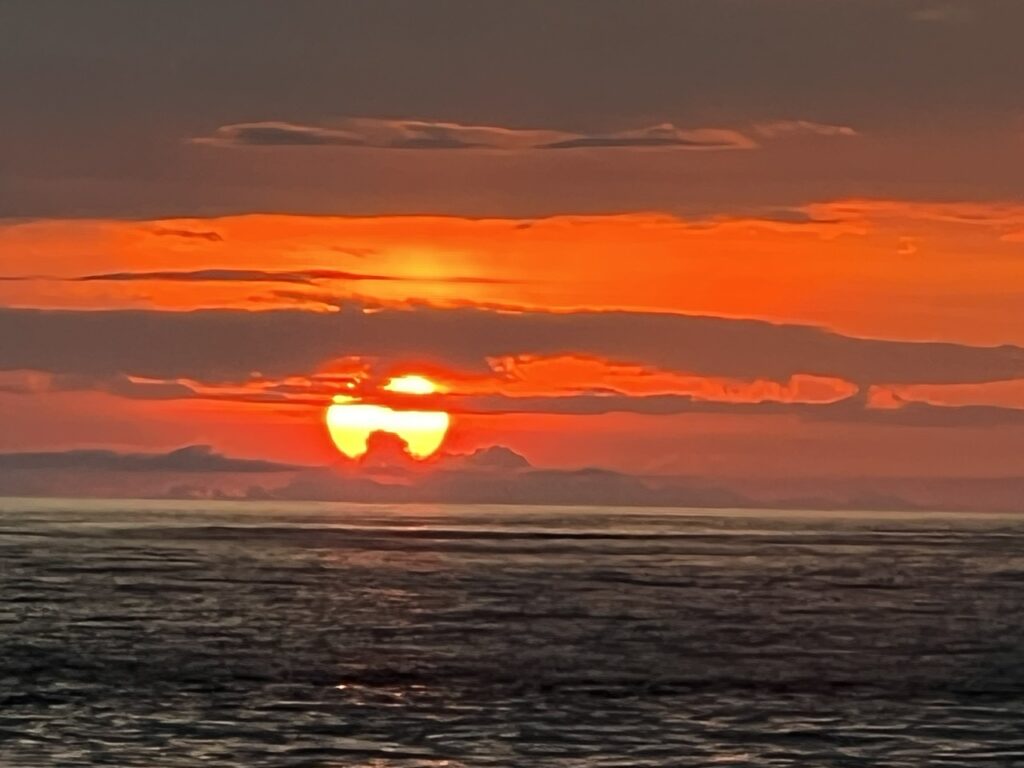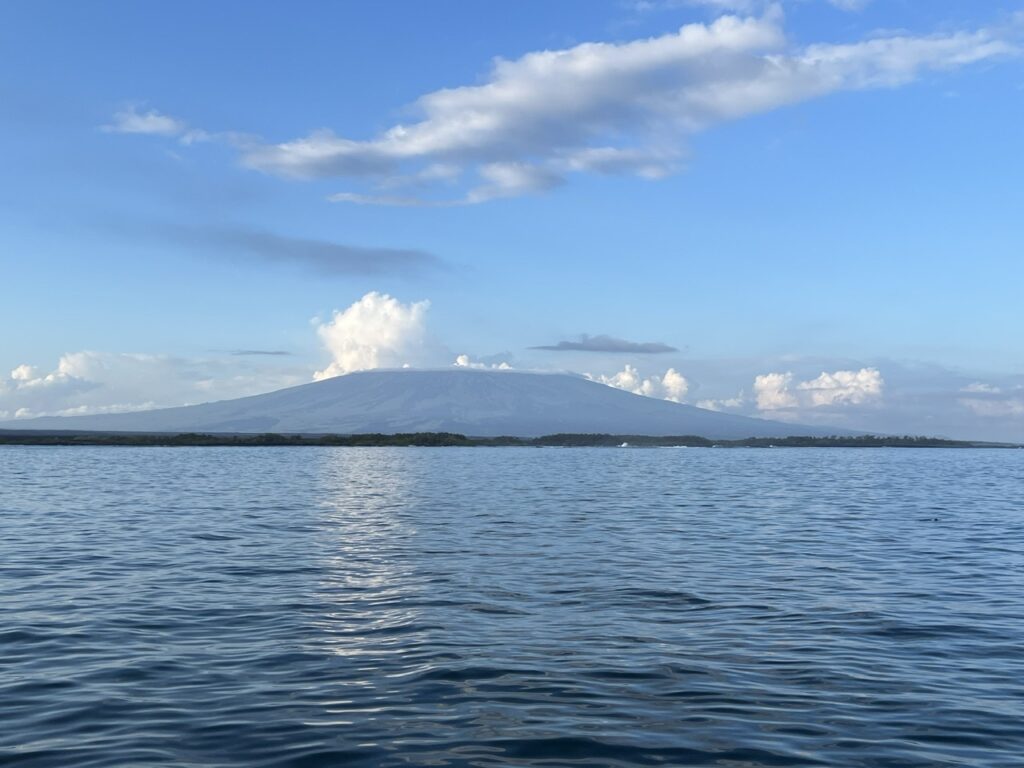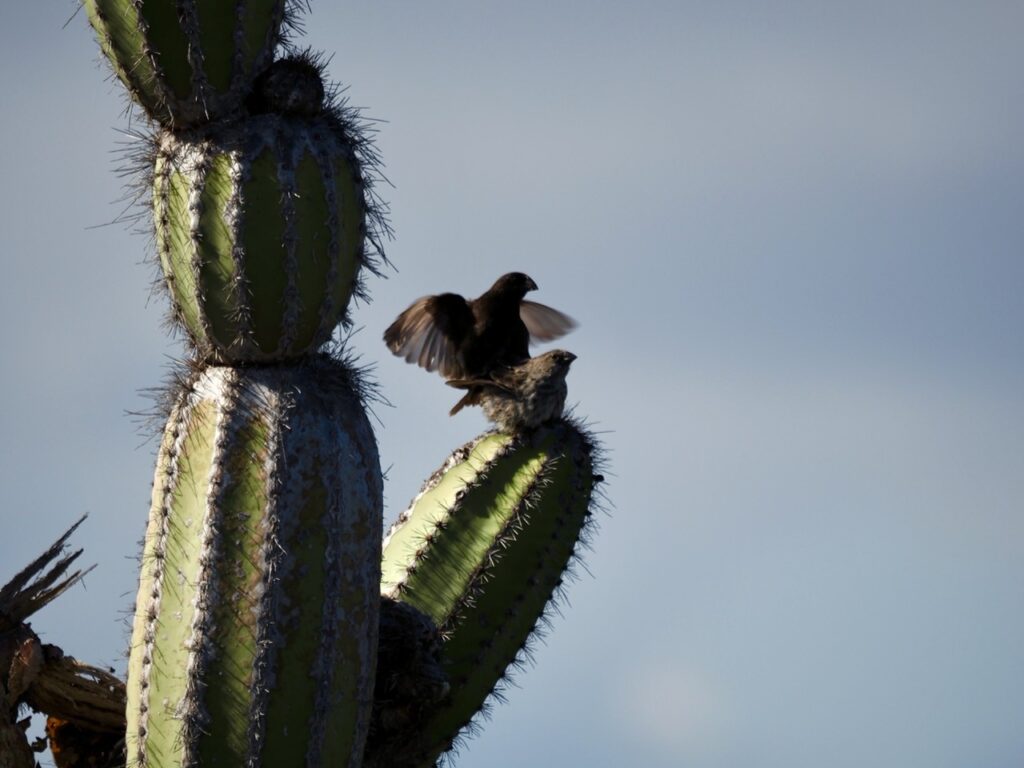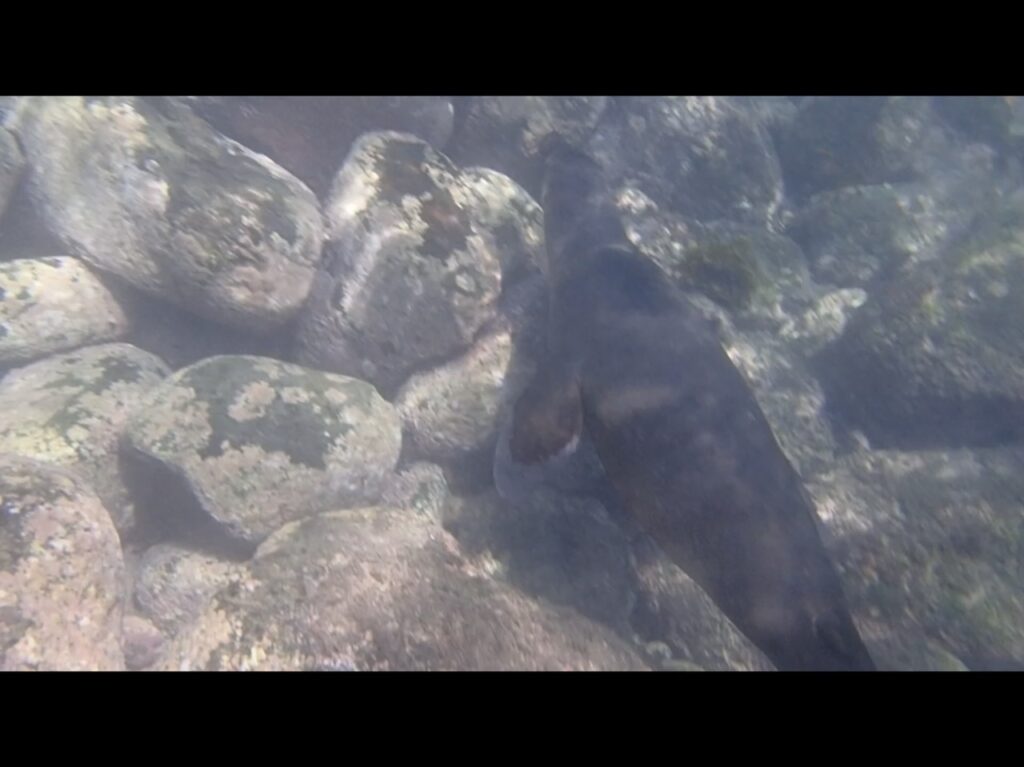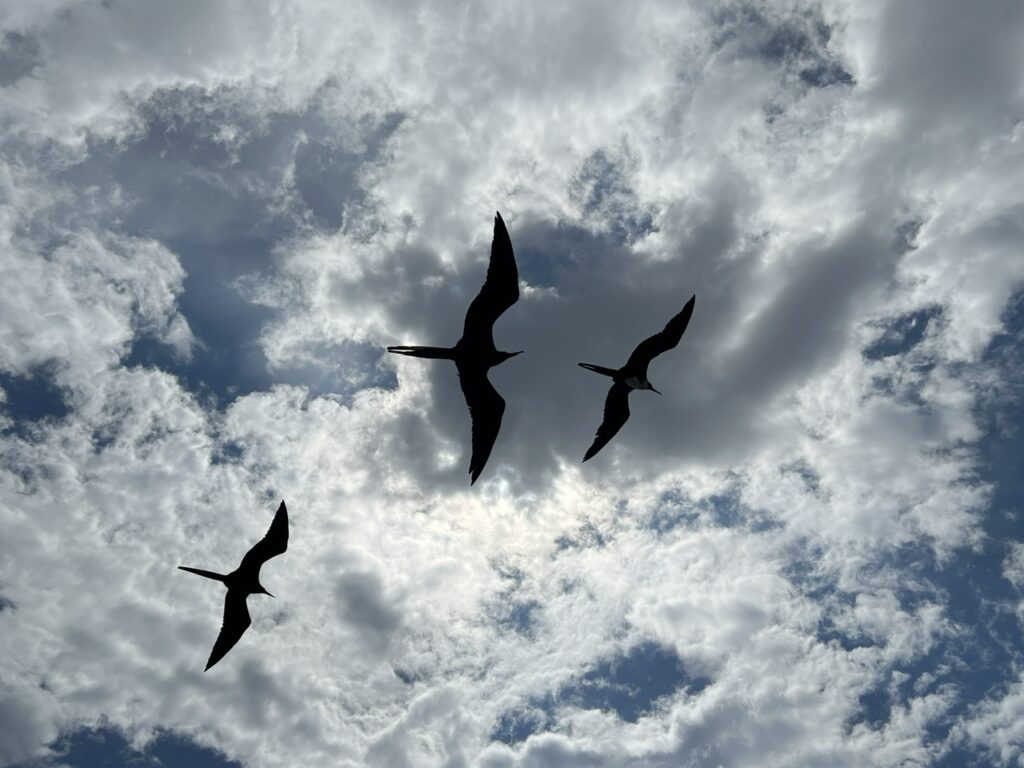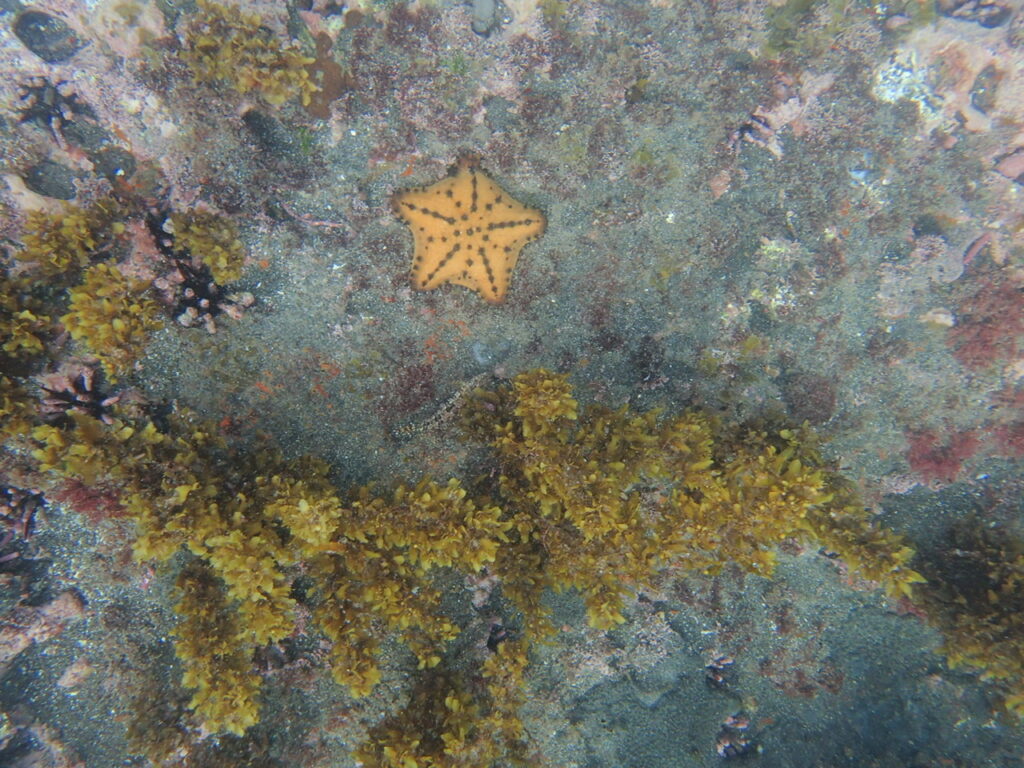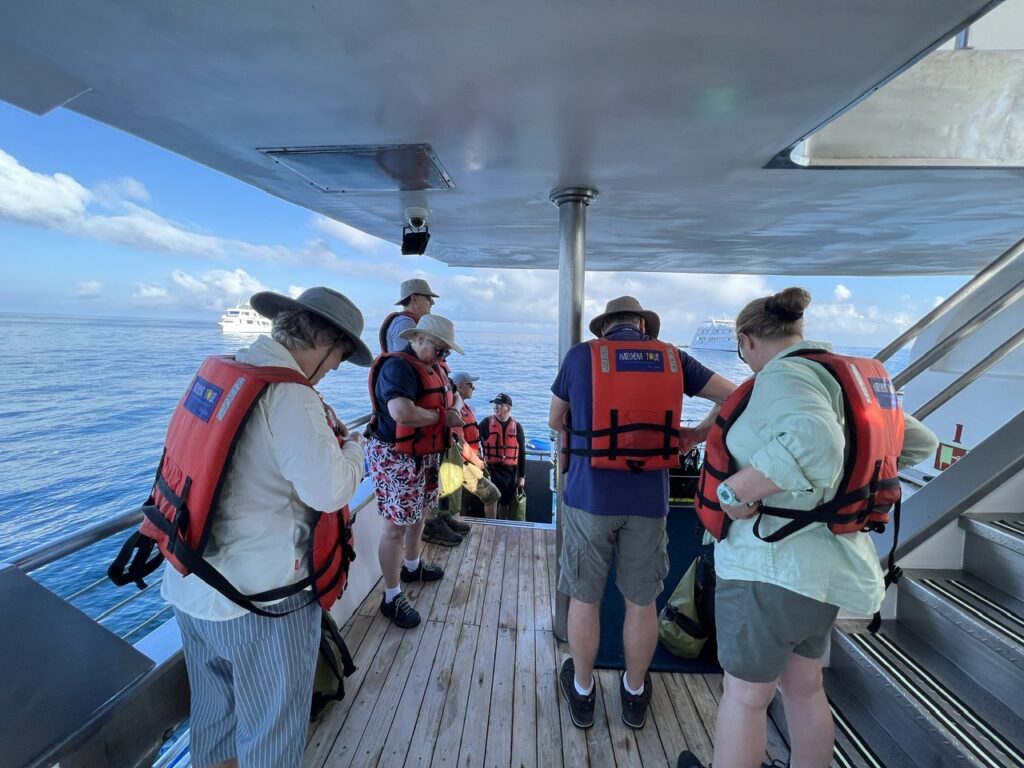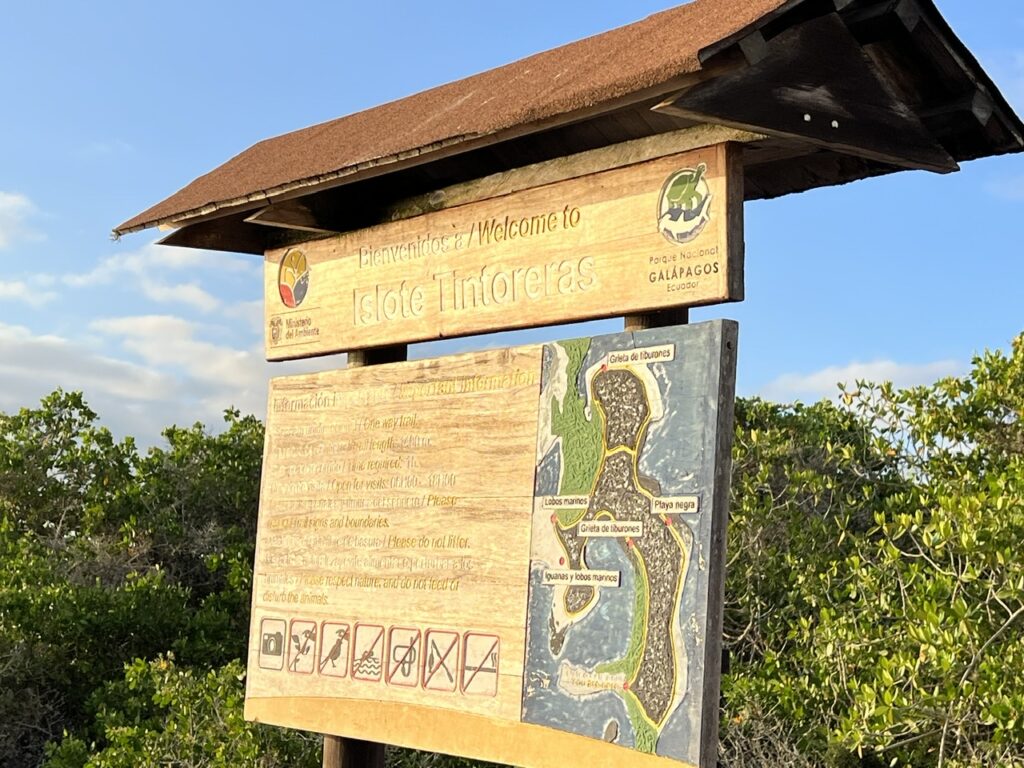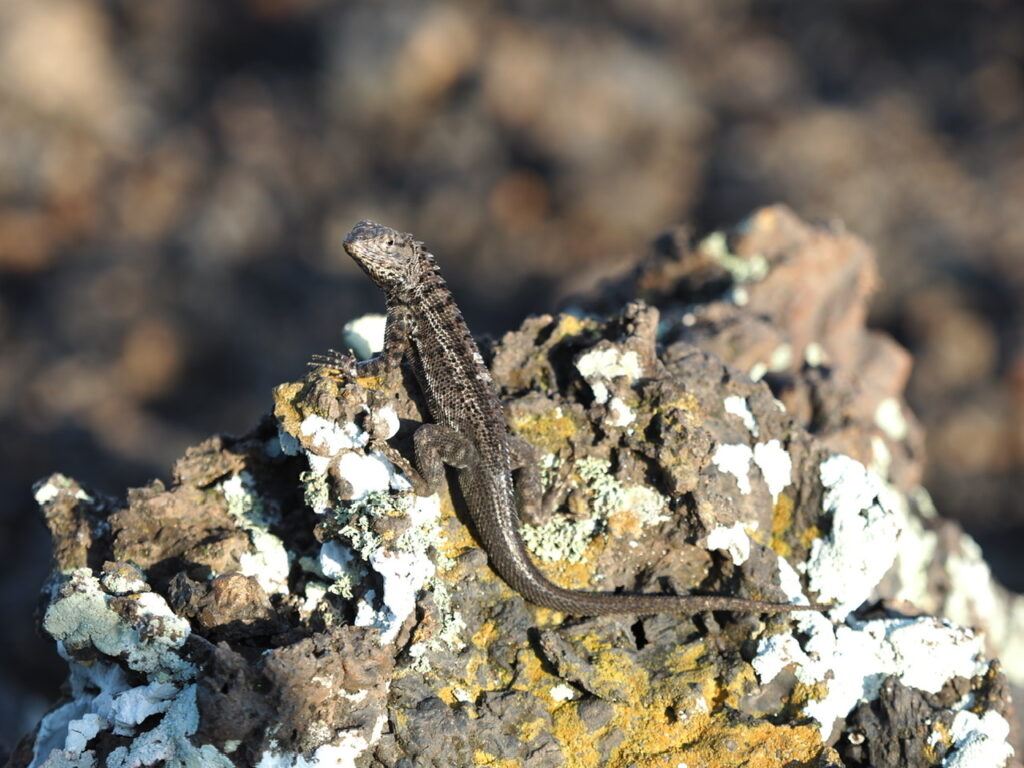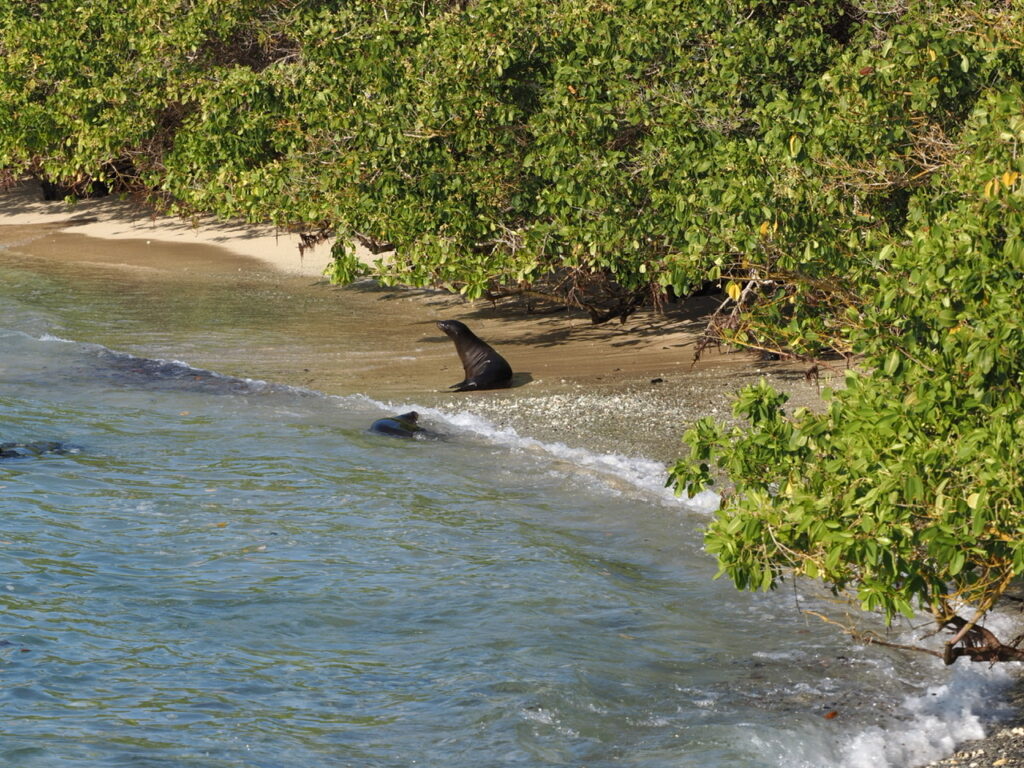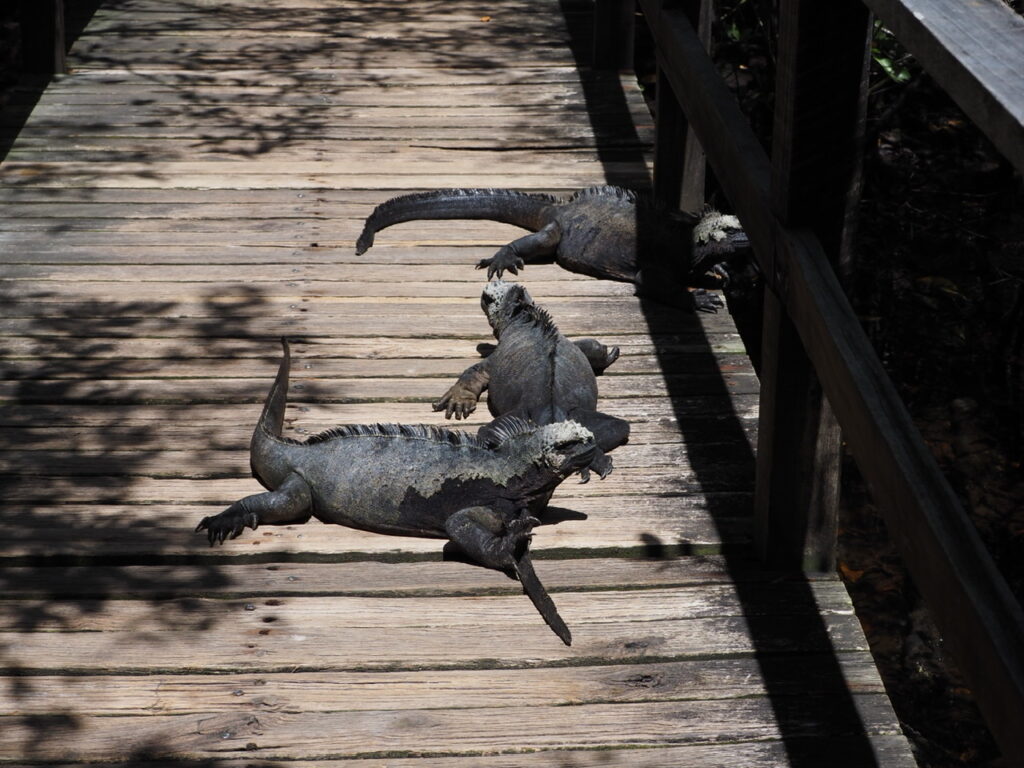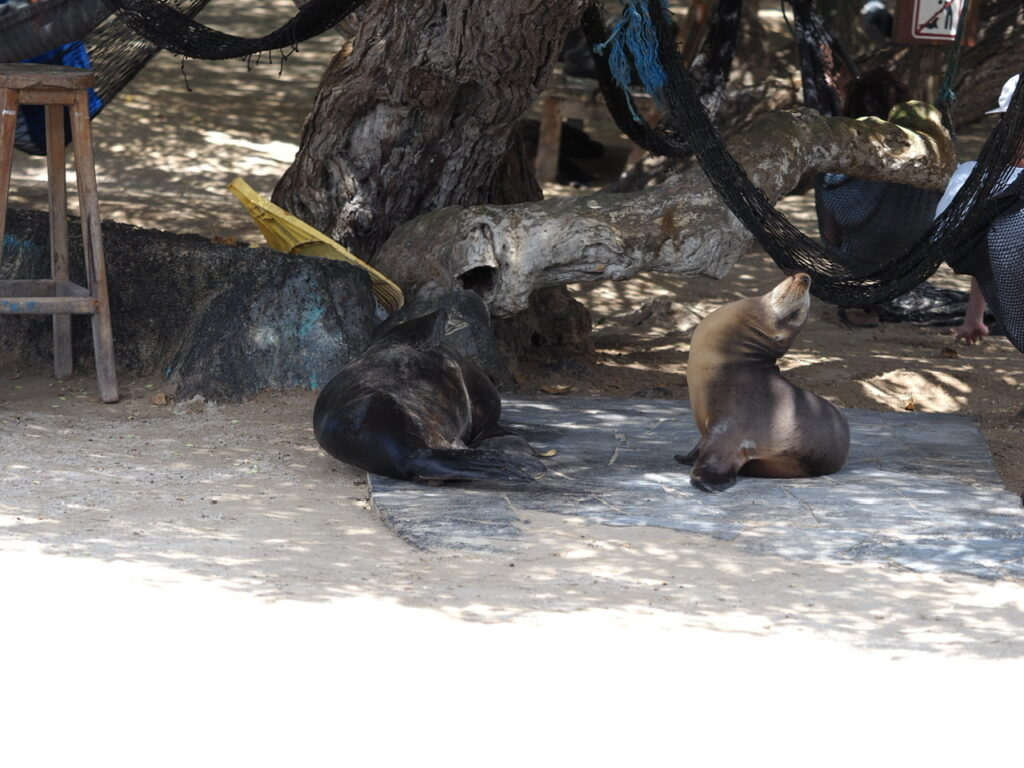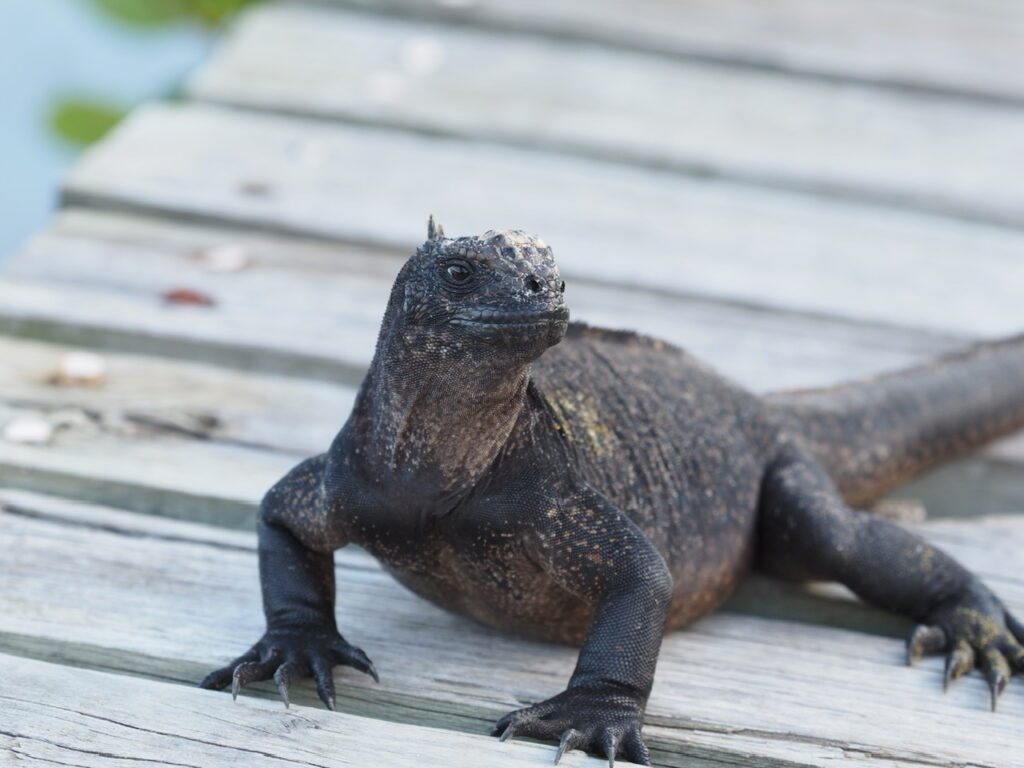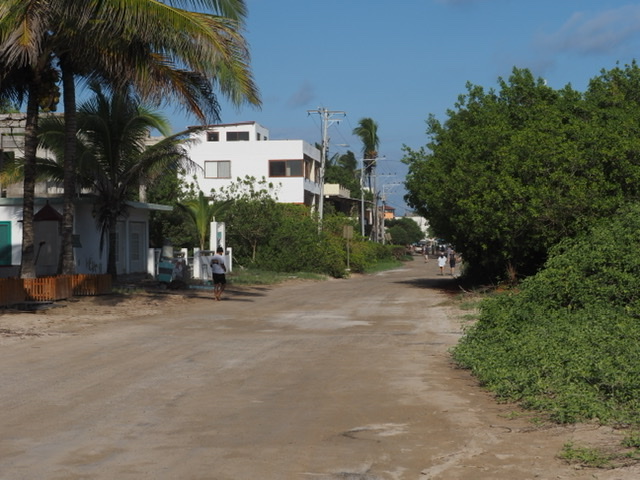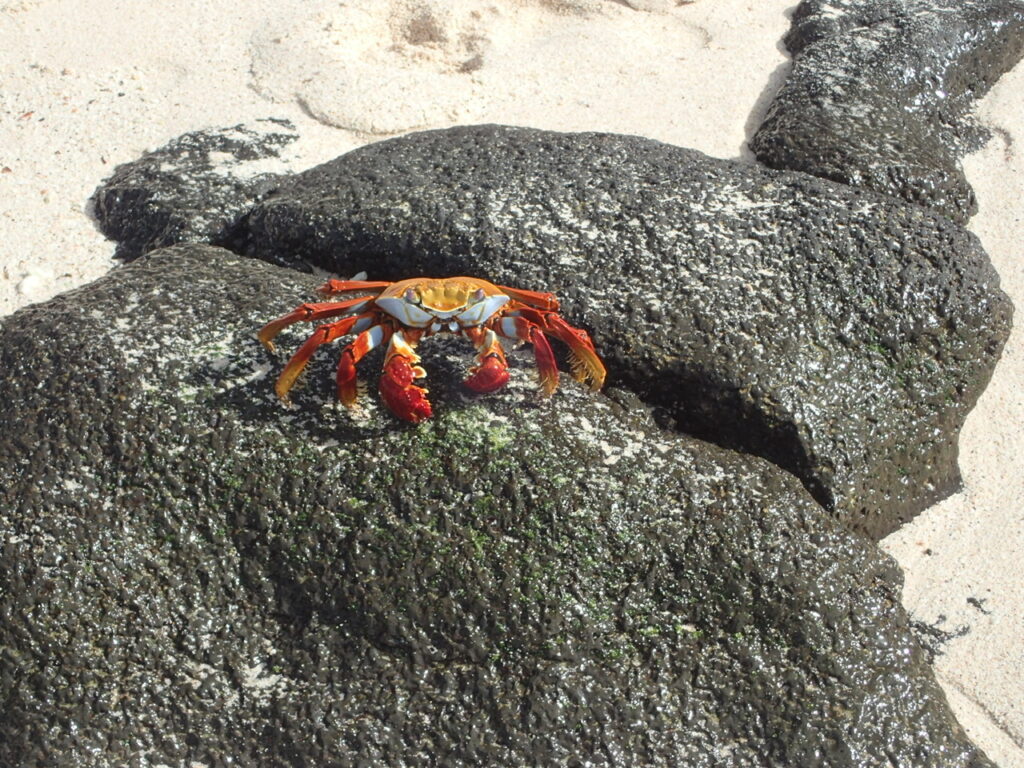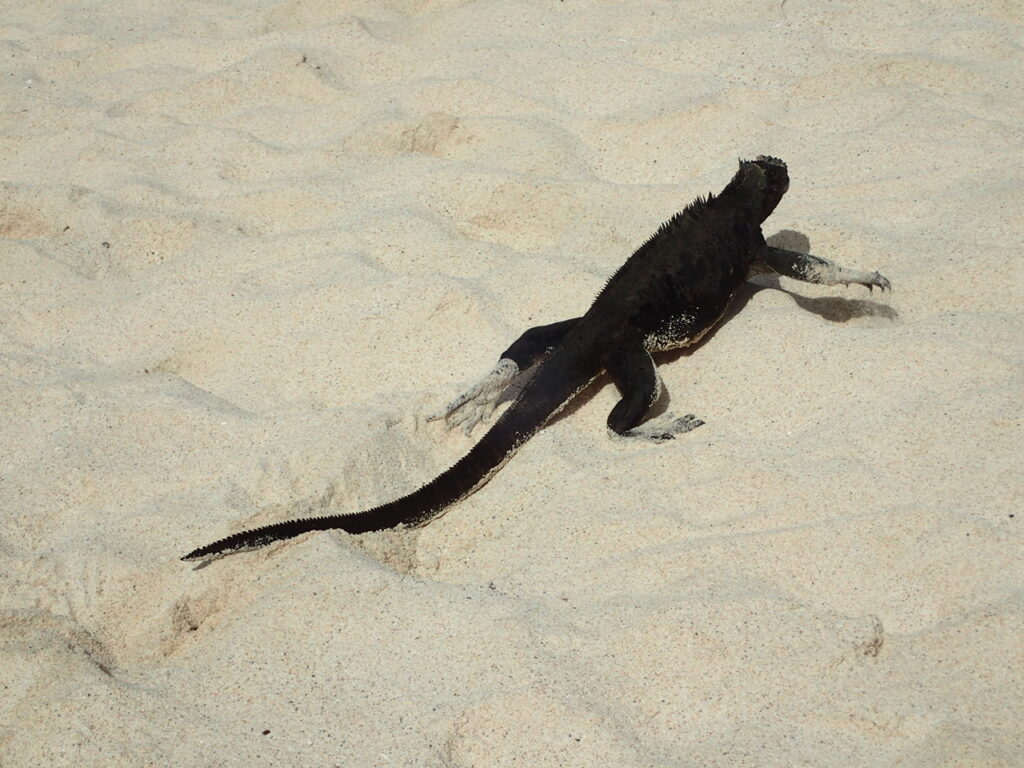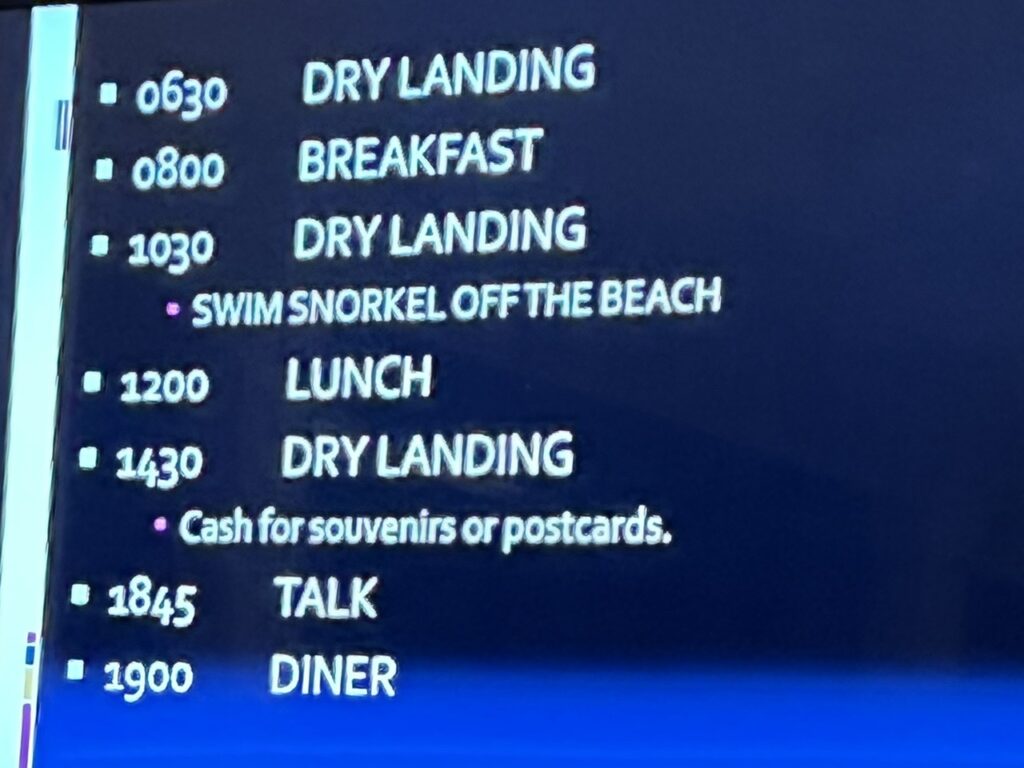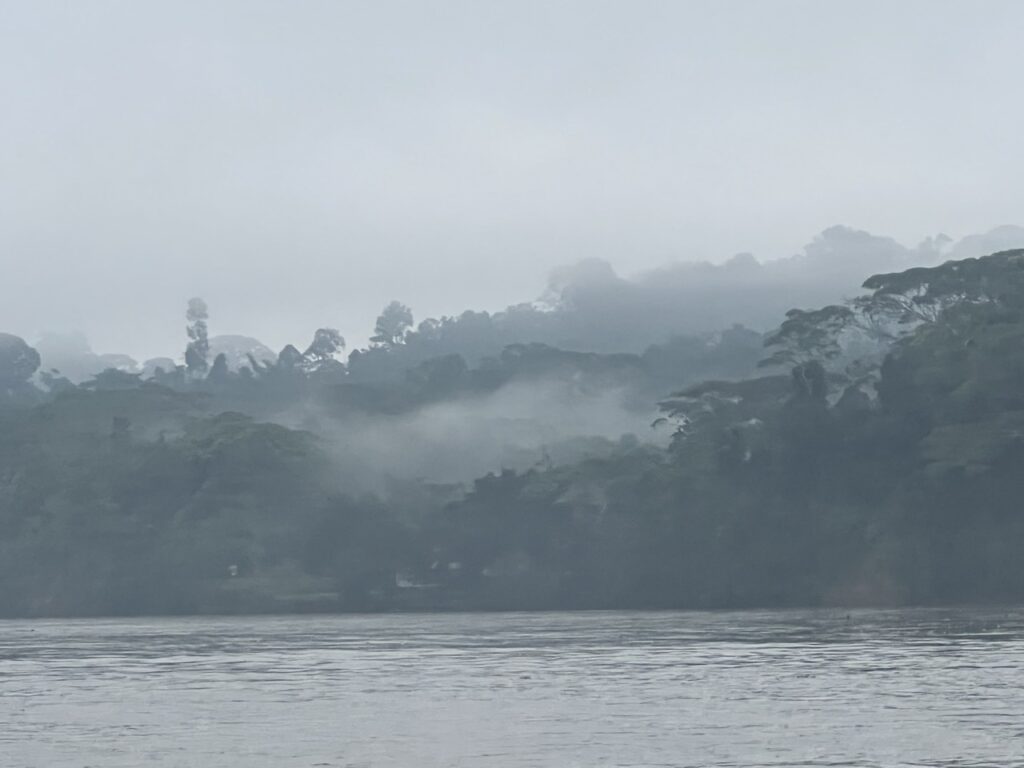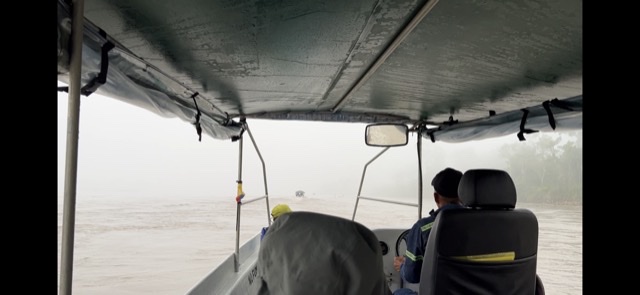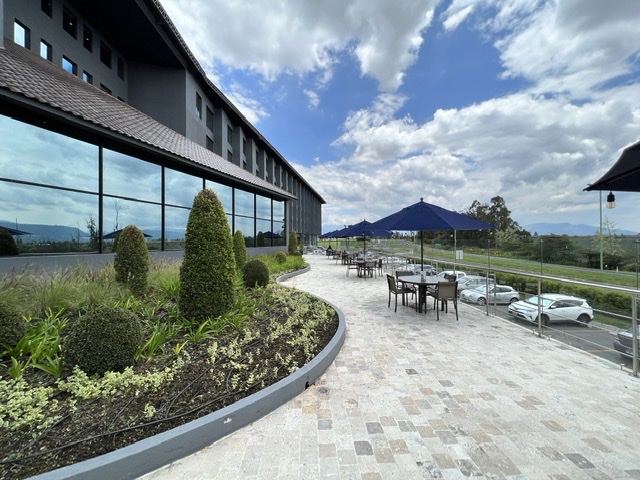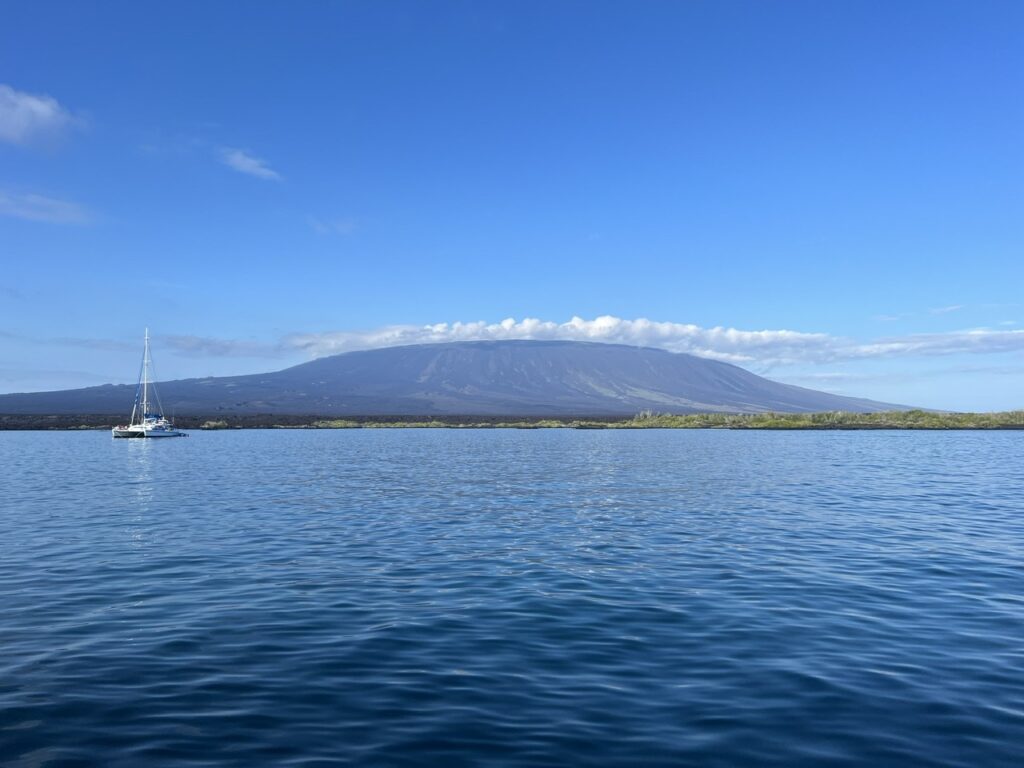
We breakfast at seven and leave in the tender at 8 o’clock to go ashore on Punta Espinoza, Fernandina Island. This is one of the youngest volcanic islands in the world. Pitch black lava-flows, a dome-shaped summit and green mangroves dominate the landscape here.
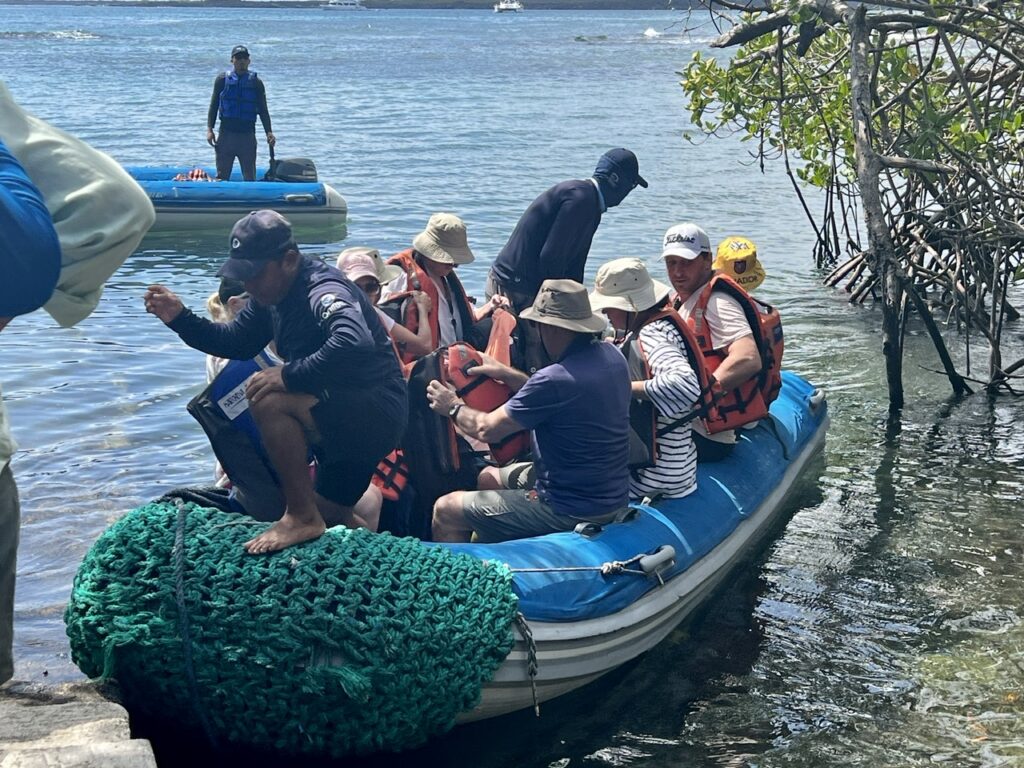
We negotiate the rocky outcrops and motor into the sheltered bay. We step carefully onto the concrete steps which are a little slippery. Hoards of iguanas are sleeping on the path under the trees.
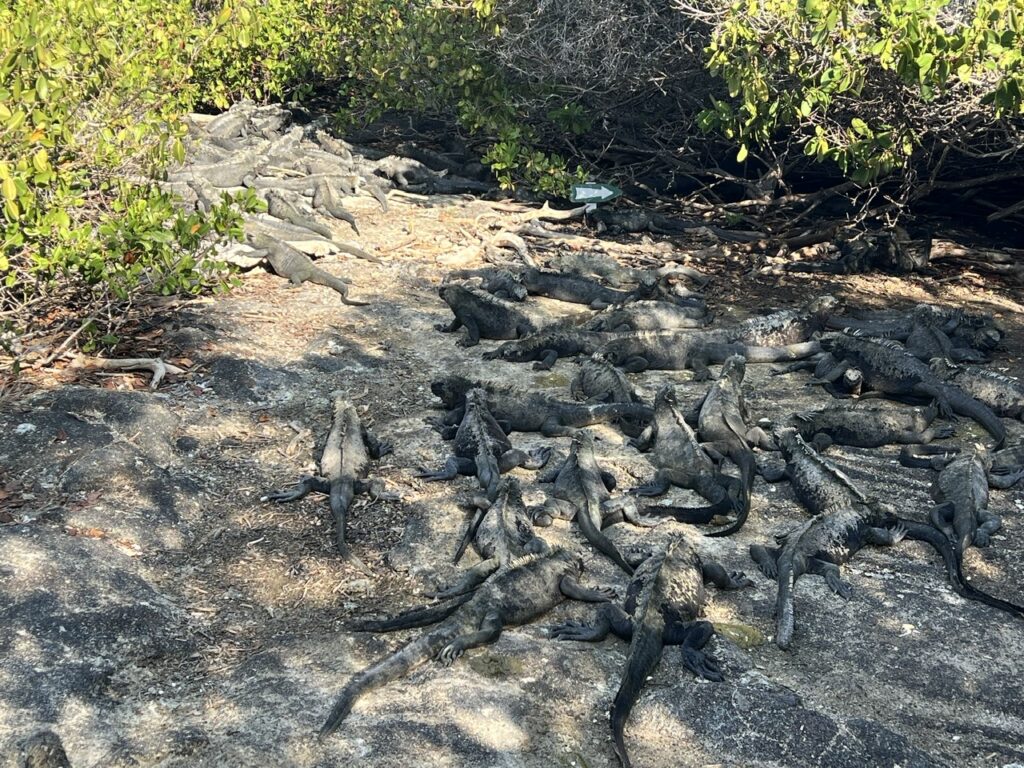
This island has an extremely high marine iguana population and Alexis our guide has told us to watch very carefully where we step. My camera appears to have become very misty. I examine the eyepiece and the end of the lens. They are clear so I cannot quite understand why the images appear to be fogged. I detach the lens and discover the camera end has misted up. I let the wind evaporate the moisture. It is incredibly humid and misting up turns out to be a consistent problem here.
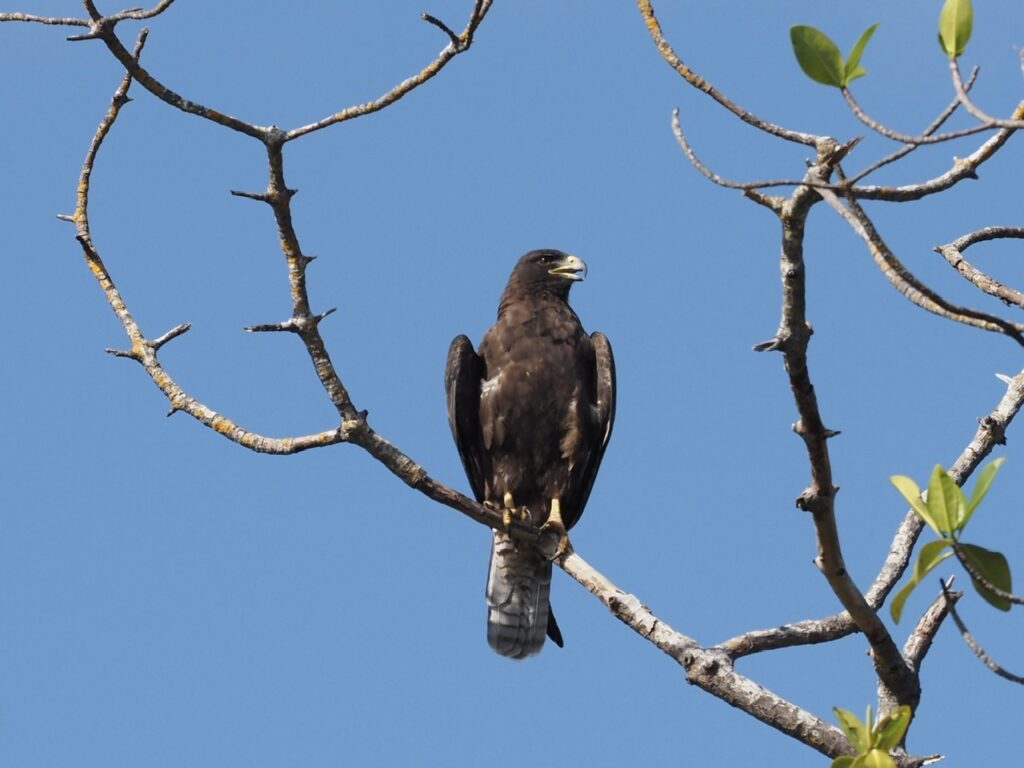
A Galapagos hawk surveys the magnificent landscape.
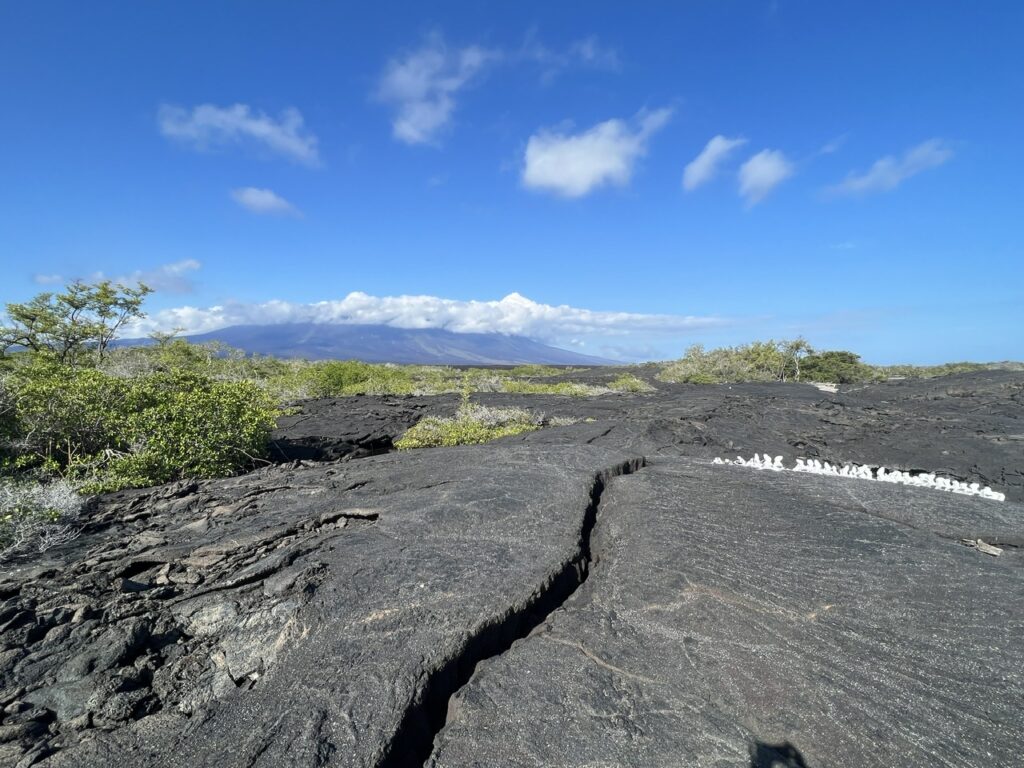
We walk onto a lava flow where Charles Darwin came ashore. A lizard scuttles past my feet.

There is the skeleton of a juvenile whale which is interesting. Alexis shows us the bones – an intervertebral disc and the top vertebra where the skull rests.



The US are monitoring the movement of the islands and have put down a GPS marker. They have established that the island has moved 6 metres since Darwin first landed here.
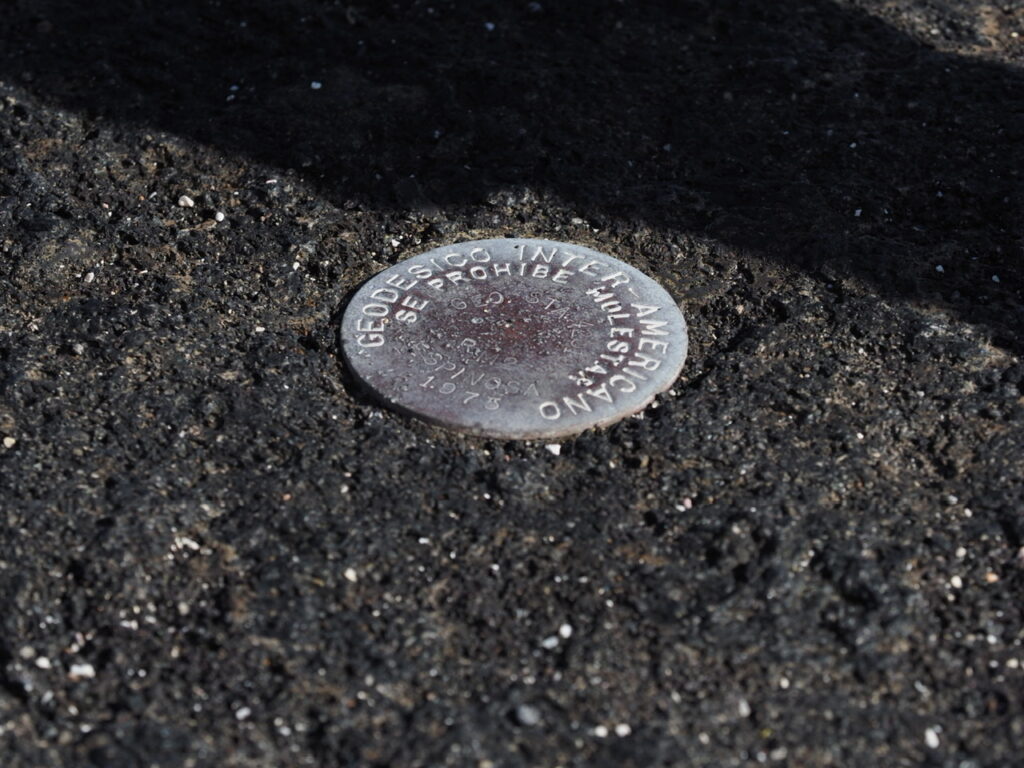
We make our way to the beach where hundreds of iguanas are sunning themselves.




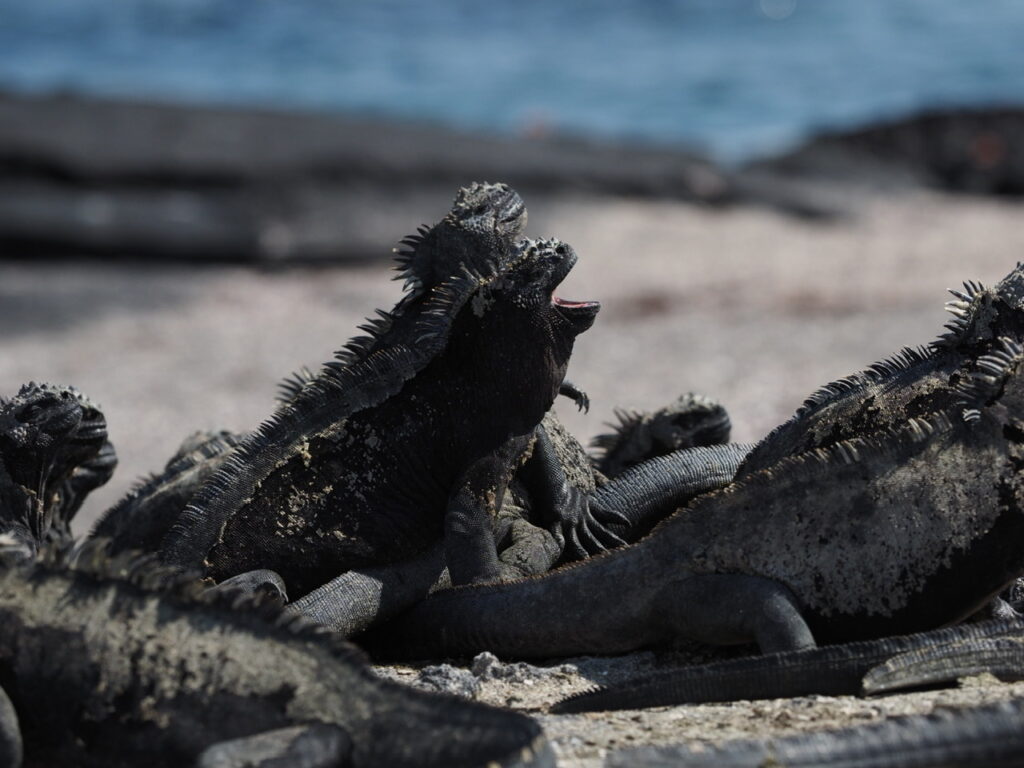
An American oyster catcher guards its eggs and brightly coloured crabs feed amongst the rocks.


Lizards sit on some of the iguanas heads as this is a good spot to catch flies.


Some of the iguanas are now warm enough to enter the sea. If you look carefully you can see one caught in the breaking surf below.


It is exceedingly hot despite the fact that it is only 8 o’clock in the morning. It is an interesting walk and we have lots of time for photography.





We head back to the boat for a quick turnaround and deep water snorkel. I decide to wear a wetsuit and this is a good call. I see some pretty cool things:-
An iguana swimming underwater, a sea lion circling me several times, huge giant turtles which are much too interested and literally swim within inches of my face. It is actually quite disconcerting to have them invading my personal space. There are loads of fish, including bump-head parrotfish, beautiful king angelfish, large shoals of grunt, blennies and lots of small fry. There is a reasonable swell so we need to pay attention as we swim along the rocky coastline.
We motor up to the northern tip of Isabela whilst we eat lunch. Our anchorage is next to impressive towering cliffs at Punta Vicente Rica. The rock strata is amazing and you can really see the different mineral layers.

We then have another deep water snorkel. This time the swell is really extreme, moving us 3-4 metres as the waves surge in. Visibility is poor and in my view being close to the rocks is dangerous. Staying off shore it is deep and hard to see much. Huge turtles join us and at one stage I am sandwiched between two with one actually resting on my back! Insane!!
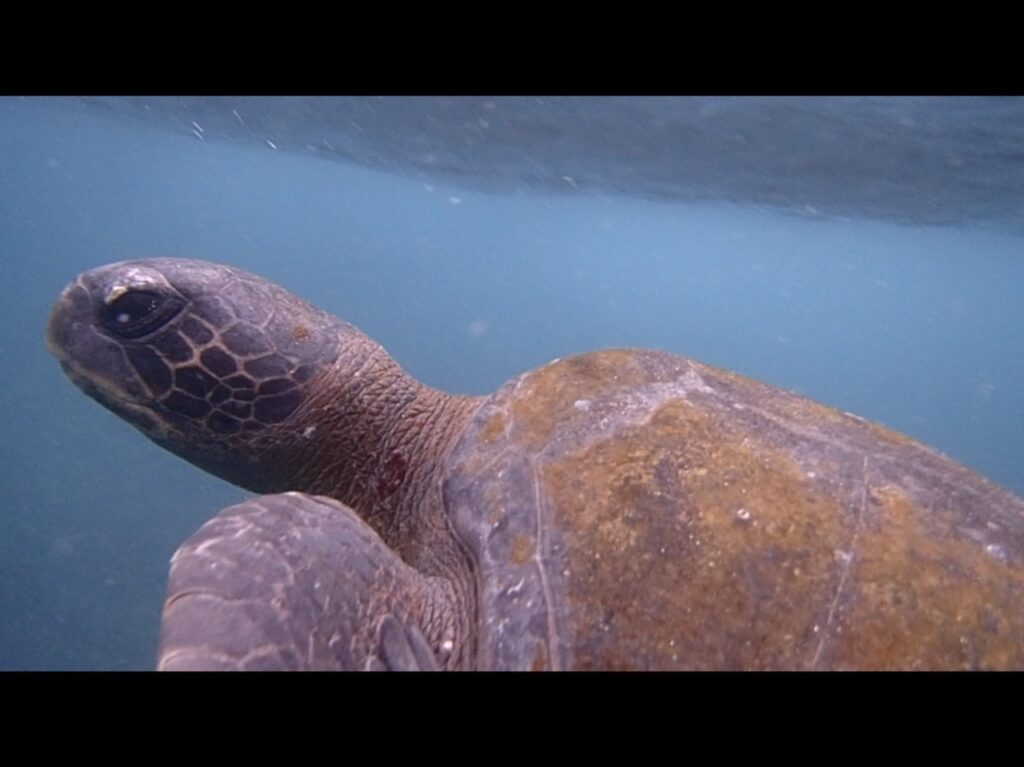
We head back and are greeted with hot chocolate. This is very welcome. I am cold despite the 28C temperature. The skies are cloudy today and it has rained lightly. The humidity keeps everything damp all the time so when the sun is not shining it can feel cool.
We have a panga ride along the shore. I sit in the front footwell in the hope of better photos but it is hard. The swell creates a lot of movement and I need to be very fast focussing. There are sea lions, flightless cormorants, blue-footed boobies, brown noddys, pelicans, iguanas and the ever present turtles. Marine iguanas cling to any available ledge.



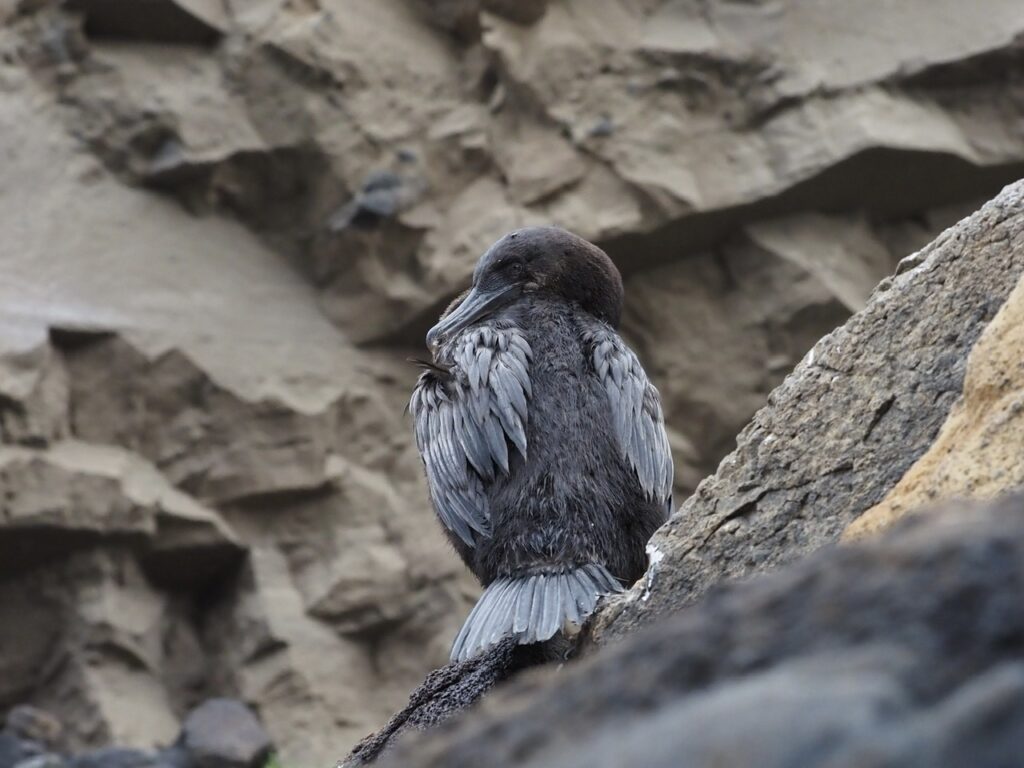
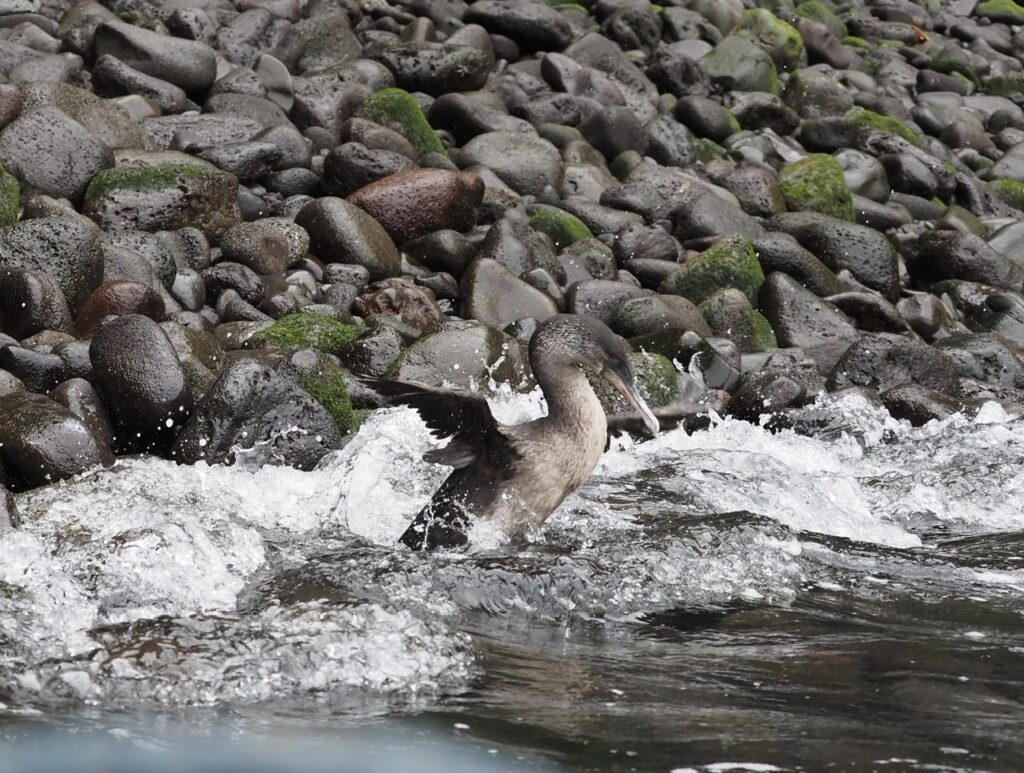

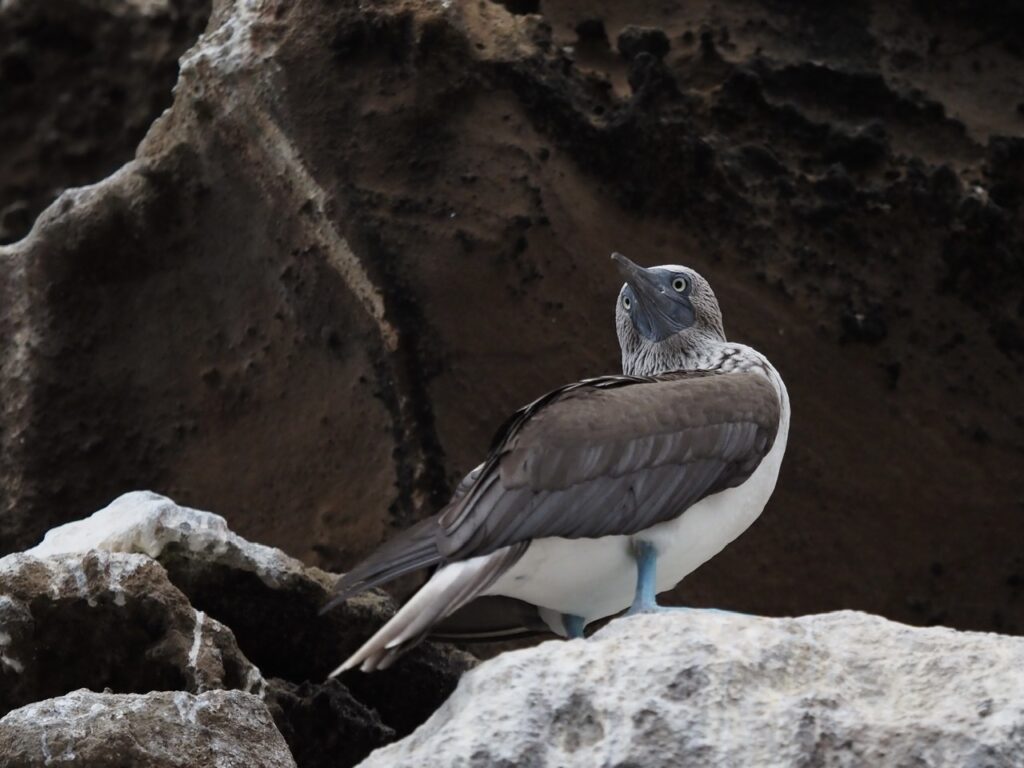
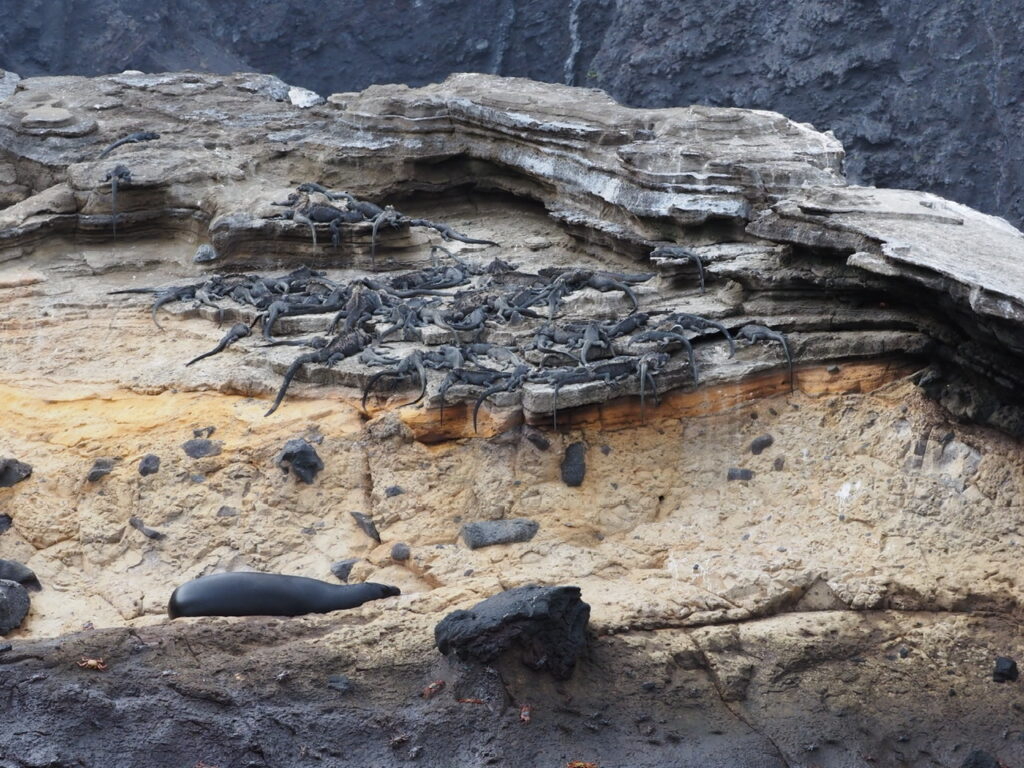


There is a cave that we motor into. Boobies and noddys nest on the edges. We feel like we are in the target area and, as I take photos, someone splashes me with water and says ‘Oh no! That’s lucky” I don’t re-act but am relieved to find out that it was just water on my head!


As we return to the boat a vicious fight breaks out between the noddys.

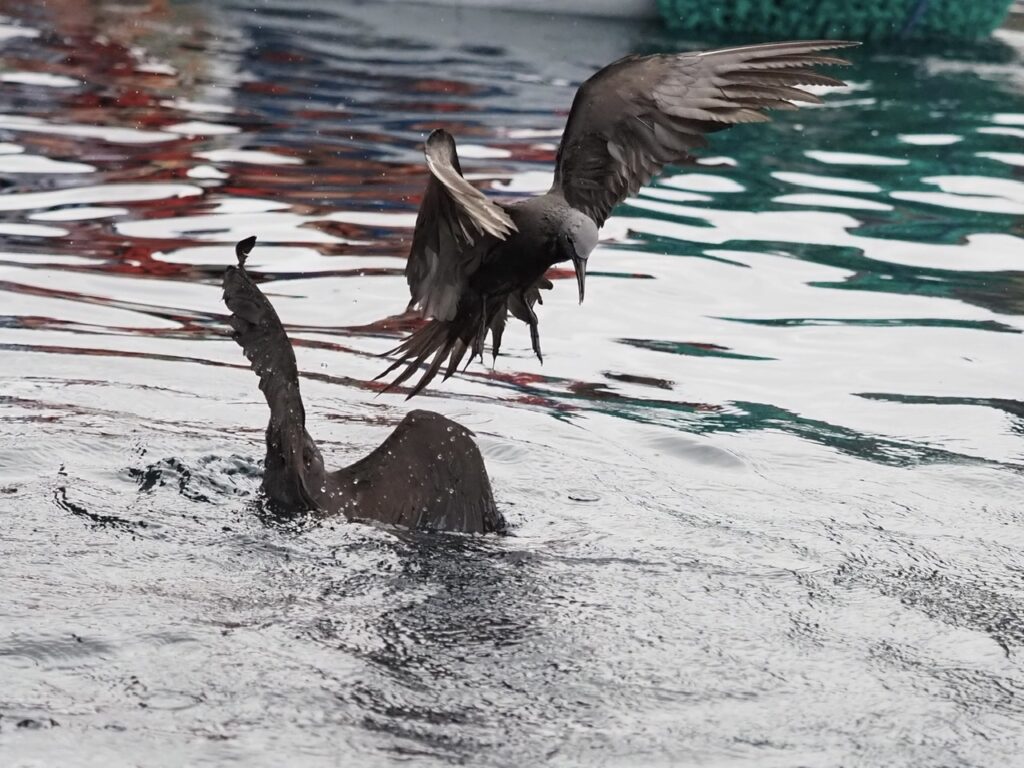
We set sail for a long journey around the northern tip of Isabela. This involves crossing the equator. We stand on the bridge so we can film 0.00.00 on the instruments. Andreas – a guest’s son, is allowed to take the helm and his sister sounds the horn. I video to capture the exact moment but the screen goes from .001S straight to .002N.


We are given pirate hats, rum and have a celebratory dance to placate Neptune, together with a certificate to prove our passage.
We then watch a gorgeous sunset over the equator.
